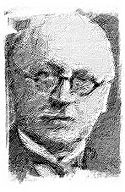


SIR EDWIN LANDSEER LUTYENS PROFESSIONAL
It was the beginning of a professional partnership that would define the look of many Lutyens country houses. In 1896 he began work on a house for Jekyll at Munstead Wood, Godalming, Surrey. During this work, he met the garden designer and horticulturalist Gertrude Jekyll. He began his own practice in 1888, his first commission being a private house at Crooksbury, Farnham, Surrey. It was here that he first met Sir Herbert Baker. After college he joined the Ernest George and Harold Peto architectural practice. Lutyens studied architecture at South Kensington School of Art, London from 1885 to 1887. For many years he worked from offices at 29 Bloomsbury Square, London. He was named after a friend of his father's, the painter and sculptor Edwin Henry Landseer. He was born in London and grew up in Thursley, Surrey, the son of Charles Henry Augustus Lutyens and Mary Theresa Gallwey. In collaboration with Herbert Baker, he was also the main architect of several monuments in New Delhi such as the India Gate he also designed the Viceroy's House now known as the Rashtrapati Bhavan. In recognition of his contribution, New Delhi is also known as "Lutyens' Delhi". He has been referred to as "the greatest British architect" and is known best for having an instrumental role in designing and building a section of the metropolis of Delhi, known as New Delhi, which would later on serve as the seat of the Government of India. (pron.: /ˈlʌtjənz/ LUT-yənz 29 March 1869 – 1 January 1944) was a British architect who is known for imaginatively adapting traditional architectural styles to the requirements of his era. Sir Edwin Landseer Lutyens, OM, KCIE, PRA, FRIBA


 0 kommentar(er)
0 kommentar(er)
